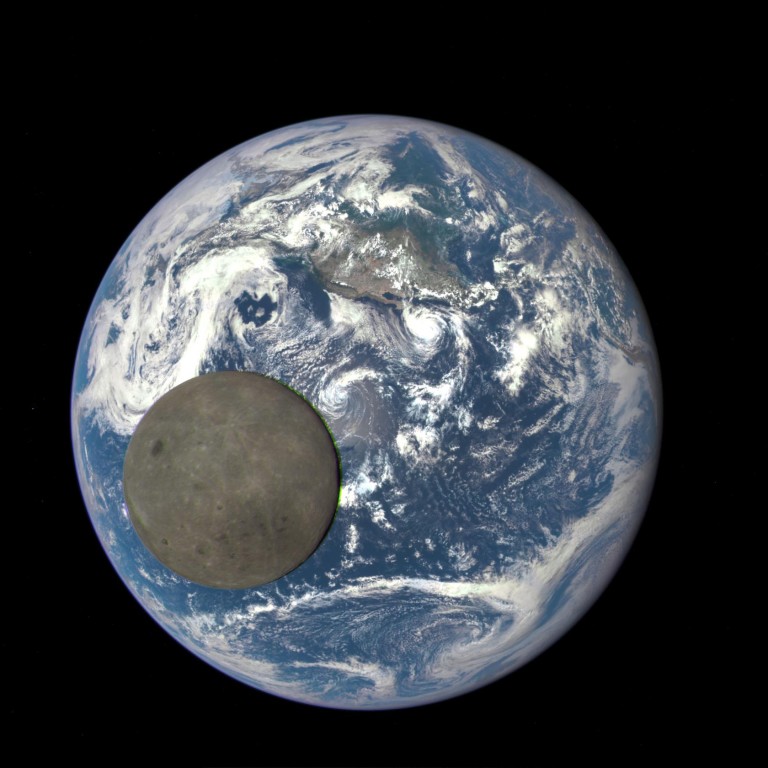
Incredible photo reveals 'dark' side of the moon, captured in full sunlight by distant Nasa satellite
In an unusual treat for astronomers, and perhaps Pink Floyd fans, what is often known as the dark side of the moon has been captured, fully illuminated, by a camera aboard a Nasa satellite.
The series of images taken from Nasa’s Deep Space Climate Observatory show a view of the far side of the moon, as it is more formally known, as it moved in front of the sunlit side of Earth.
The images, taken on 16 July, show the moon moving across the Pacific Ocean towards North America. Its far side is shown in detail owing to sunlight hitting it, revealing a crater and a large plain called the Mare Moscoviense.
Earth-bound observers see only one side of the moon because it is tidally locked to our planet, meaning its orbital period is the same as its rotation around its axis.
The images of the far side of the moon, which wasn’t seen by humankind until a Soviet mission in 1959, will be captured about twice a year by Nasa’s observatory, which is primarily monitoring solar winds.
“It is surprising how much brighter Earth is than the moon,”said Adam Szabo, a scientist at Nasa’s Goddard Space Flight Center. “ Our planet is a truly brilliant object in dark space compared to the lunar surface."
Associate Professor Michael Brown, an astronomer at Monash University, said the images of the far side of the moon were “captivating”.
“It’s unusual because you need a spacecraft that has gone beyond the moon to get a picture of the moon like this,”he said.
“This was taken around one million miles from Earth. We don’t normally get that perspective.
“Because of its mission, this spacecraft is in a sweet spot directly in the direction of the sunlit Earth, meaning it’s seeing a completely sunlit moon, too. You get a whole new perspective on the moon. It looks very different from the side we see from Earth."
